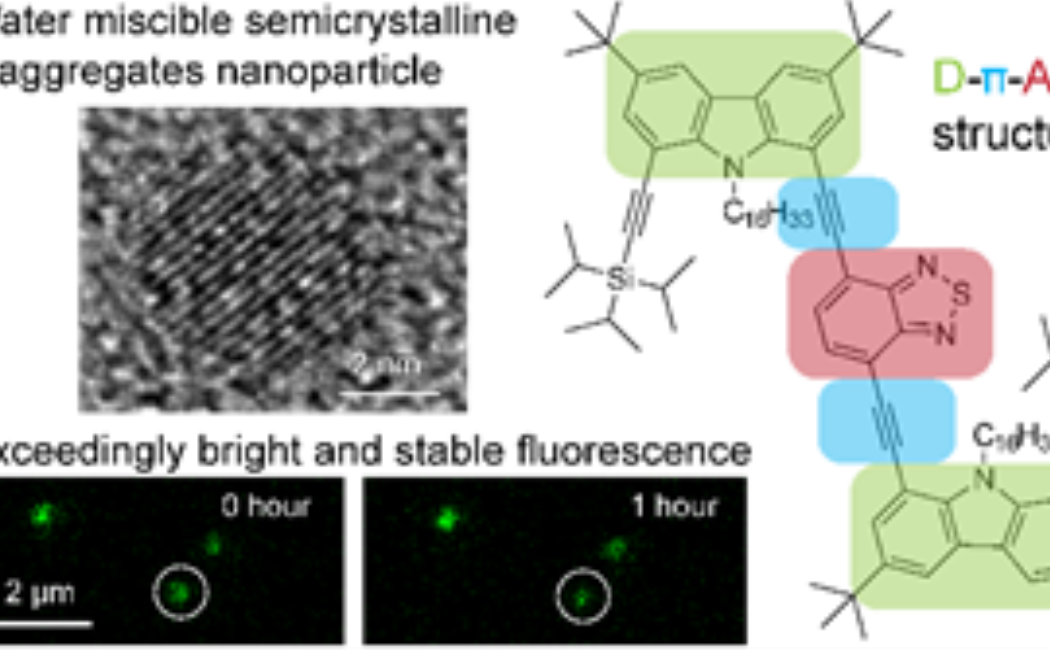
05 April, 2021
Hubert Piwoński, Shuho Nozue, Hiroyuki Fujit, Tsuyoshi Michinobu, Satoshi Habuchi*
Development of biocompatible fluorophores with small size, bright fluorescence, and narrow spectrum translate directly into major advances in fluorescence imaging and related techniques. Here, we discover that a small donor-acceptor-donor-type organic molecule consisting of carbazole (Cz) donor and benzothiazole (BT) acceptor (CzBTCz) assembles into quasi-crystalline J-aggregates upon a formation of ultrasmall nanoparticles. The 3.5-nm CzBTCz Jdots show a narrow absorption spectrum (FWHM = 27 nm), near-unity fluorescence quantum yield (ϕfl = 0.95), and enhanced peak molar extinction coefficient. The superior spectroscopic characteristics of the CzBTCz Jdots result in two orders of magnitude brighter photoluminescence of the Jdots compared with semiconductor quantum dots, which enables continuous single-Jdots imaging over one-hour period. Comparison with structurally similar CzBT nanoparticles demonstrates a critical role played by the shape of CzBTCz on the formation of the Jdots. Our findings open an avenue for the development of new class of fluorescent nanoparticles based on J-aggregates.
https://pubs.acs.org/doi/10.1021/acs.nanolett.0c04928